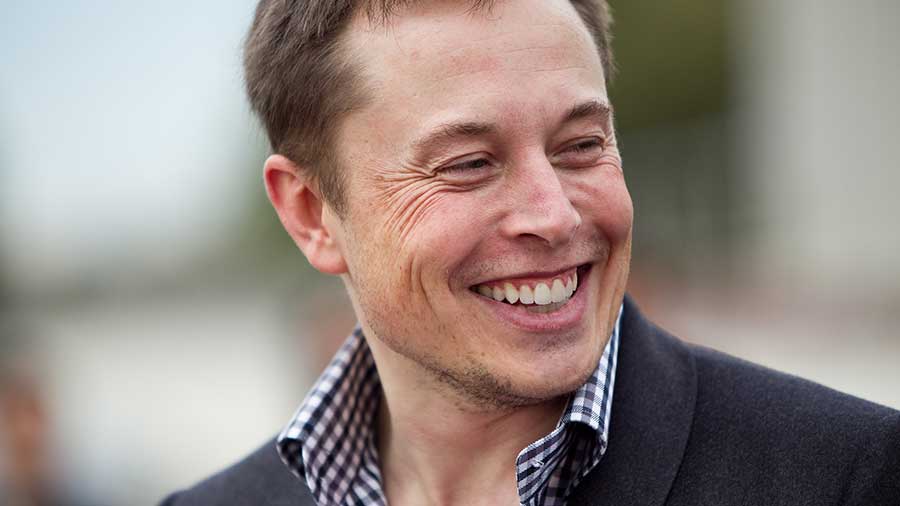SpaceX wants people to start saving to buy tickets for Mars. Following SpaceX’s success in launching a reused rocket into space for the first time, the company is now telling people to prepare for their Mars trips.
The Elon Musk-owned company recently underwent the task of reusing rockets, which allows them to save costs and provide companies and customers with a cheaper option for their space errands.
On Wednesday, president of SpaceX, Gwynne Shotwell, told attendees at the 33rd Space Symposium in Colorado Springs that anyone who still doubted SpaceX after their success last week was being foolish.
“I hope you’re all thinking about your tickets to Mars,” said Shotwell at the Symposium. “(Reusability is) really a tremendous capability, and I highly recommend it for all of you.”

Tickets to Mars could cost $200,000 or more
CEO Elon Musk first said the tickets for SpaceX trips to Mars would cost $200,000, when he announced the company’s plans to take people to the Red Planet at the 67th International Astronautical Congress in Guadalajara, in September 2016.
At the congress, Musk said he planned to help humans become a “multiplanetary species”. He explained that with the reusable rockets, costs from the launch will substantially go down.
However, despite the fact that SpaceX would use reusable rockets, it’s probably going to cost more than $200,000 to send a human being to live on Mars. Gizmodo reached Ella Atkins, a professor in the Department of Aerospace Engineering at the University of Michigan, who shared her skepticism about the cost of the trip.
“Just from a basic analysis of rockets and gravity, and then doing some back of the envelope calculations on how much you need to take with you to sustain people… 200,000 seems very ambitious,” said Atkins, according to Gizmodo. “But there are some politics here – how many people are going to really going to get behind a company if SpaceX told them, ‘Yeah, it’s going to cost a million dollars to go to Mars.”

Atkins believes that the $200,000 price tag provides hope to people who want to visit the Red Planet. She said that some Mars enthusiasts might feel that a ticket is attainable if they save up for years.
However, she noted that SpaceX is doing what they need to support the American people. Meaning, SpaceX wants the Congress to feel pressured to fund companies like theirs, and if they say that they’re only really going to take billionaires to Mars, it wouldn’t cause lawmakers want to give money to SpaceX, according to Atkins.
For Atkins, aside from the cost involved with traveling to Mars, there’s a high risk of people losing their lives with the trip. She explains that the risk of fatality when traveling to space is high, and she recommended that people be aware of this before making their decision to live on the Red Planet.
Risk of fatality and health issues are possible
Elon Musk already warned possible customers that they should be ready to die for his dream, especially on the first mission that takes off.
“The risk of fatality will be high,” said Musk in the congress in Guadalajara. “It would be basically, are you prepared to die? If that’s okay, you’re a candidate for going… the probability of death is quite high on the first mission.”
The possibility of a rocket malfunction resulting in a tragedy like Apollo 13 is possible, as well as adverse health effects on the person making the year-long trip to Mars. In December 2016, NASA scientists published a research that found that the volume of gray matter in astronauts’ brains fluctuated in certain areas resulting from both short and long duration spaceflights. The team studied 26 astronauts who had been in space between 2008 and 2012, and after examining MRIs from the astronauts taken before and after their space missions they noticed that all subjects had experienced increases and decreases in gray matter volumes in different areas of the brain. Gray matter is responsible for key functions in the brain, such as muscle control, regulating emotions, memory, and sensory perception.
In December 2016, NASA scientists published a research that found that the volume of gray matter in astronauts’ brains fluctuated in certain areas resulting from both short and long duration spaceflights. The team studied 26 astronauts who had been in space between 2008 and 2012, and after examining MRIs from the astronauts taken before and after their space missions they noticed that all subjects had experienced increases and decreases in gray matter volumes in different areas of the brain. Gray matter is responsible for key functions in the brain, such as muscle control, regulating emotions, memory, and sensory perception.
The team studied 26 astronauts who had been in space between 2008 and 2012, and after examining MRIs from the astronauts taken before and after their space missions they noticed that all subjects had experienced increases and decreases in gray matter volumes in different areas of the brain. Gray matter is responsible for key functions in the brain, such as muscle control, regulating emotions, memory, and sensory perception.
Gray matter is in charge of key roles in the brain, such as muscle control, managing emotions, memory, and visual perception. Astronauts are also known to suffer from bone mass loss, muscle wasting, vision changes and they are exposed to radiation.
SpaceX has not said whether they expect to prepare Martian tourists for the possibility that Mars might be a one-way trip, or that they might face health issues resulting from it. Musk told Gizmodo before that the idea was ridiculous, as being in deep space or in the Earth’s orbit for long periods was worse than Mars.
Atkins believes that the risks won’t matter to astronauts, as they are explorers. She added that SpaceX needs to be more realistic when marketing a trip to Mars and expecting people to come back alive, as she fears that the possibility is pretty small.
Source: Gizmodo

imagine the air miles!